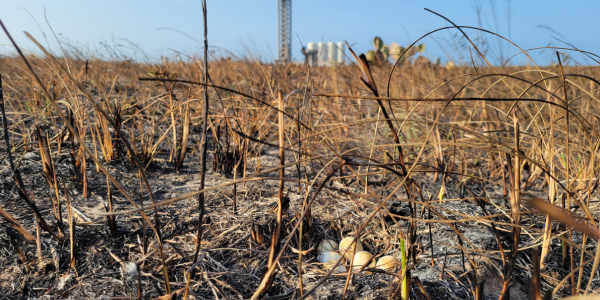Sickle Darter Protected Under Endangered Species Act

Contact:Will Harlan, (828) 230-6818, WHarlan@biologicaldiversity.org
Sickle Darter Protected as Threatened Under Endangered Species Act
Fish Imperiled by Pollution, Dams in Tennessee, Virginia
KNOXVILLE, Tenn.— In response to a 2010 petition and 2015 agreement with the Center for Biological Diversity, the U.S. Fish and Wildlife Service today announced a final rule to protect the sickle darter as threatened under the Endangered Species Act. But in today’s decision, the agency failed to designate critical habitat for the fish.
“It’s tragically too late for the sickle darter in the watershed where I live, the French Broad River, but with protections in place, we can still save this rare fish in other rivers,” said Will Harlan, a senior campaigner and staff scientist at the Center. “So many folks get their drinking water from or just have fun on the Appalachian rivers where these fish live, so saving this big, beautiful darter will also help a lot of people.”
The primary threat to the sickle darter is habitat loss from siltation, water pollution and dams. Siltation fills the spaces in between rocks on the river bottom that the fish needs to lay eggs and find prey. The sickle darter’s water is polluted by animal waste, domestic sewage, pesticides, heavy metals from mining, and other toxins and pathogens. Dams and impoundments have separated sickle darter populations and limited their movement. Climate change is also harming the fish and its habitat.
In Tennessee, populations of the sickle darter are still found in the Emory, Little and Sequatchie Rivers. These populations are separated from populations in the upper Clinch and the Middle and North Fork Holston Rivers in Virginia. The fish has been wiped out in North Carolina, where it was once found in the French Broad, South Fork Holston, Powell and Watauga Rivers.
“Our cities and farm fields are polluting rivers across the country,” said Harlan. “This fish is just one of many that are suffering. We have to do more to protect them, and one powerful way the Service can do that is by providing critical habitat for the sickle darter.”
The sickle darter is large by darter standards, growing to be nearly 5 inches long. It has bigger scales than other darters and a prominent black stripe on its side. It uses its large mouth and long pointed snout to feed on larval mayflies, midges, riffle beetles, caddisflies and dragonflies. Sickle darters can live up to four years.
It was first described as a species in 2007, when it was found to be distinct from the closely related longhead darter. The scientific name is Percina williamsi, honoring the renowned biologist Jim Williams, who has been working to describe and protect freshwater species in the southeastern United States for more than half a century.






